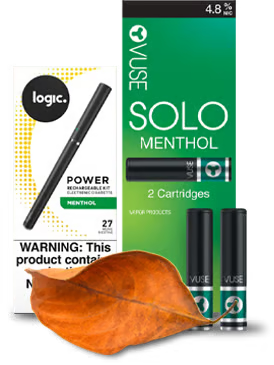
Ultimately, quitting traditional cigarettes isn’t the struggle, it’s the battle to overcome nicotine. This potent stimulant is found within everyday tobacco products and once inhaled, it courses through your lungs and into your bloodstream attaching itself to receptors within your brain. This causes a steady release of dopamine — a natural, organic chemical that releases slowly and makes you feel happy — which has many adverse health risks. When the effect quickly wears away, smokers may then be faced with irritability, moodiness and even insomnia. That’s why if you’re looking to wean yourself off from the stronghold of nicotine, it’s important to take advantage of these favorable nicotine replacement therapies.
What types of nicotine replacement therapy exist?
One of the biggest factors that motivate combustible cigarette smokers to try nicotine replacement therapy (NRT) is the fact that these treatments have the ability to combat some of the intense and challenging withdrawal symptoms — cravings, anger, frustration, anxiety and depression — that are enhanced when the nicotinic receptors in the brain are not receiving nicotine. While there are various forms of nicotine replacement therapy (NRT), not every product has the ability to work for everyone. The following NRT are commonly used when ex-smokers are trying to wean down their nicotine levels.
- Nicotine patch: The patch gives a measured dose of nicotine through the skin. There are many different strengths and types available.
- Nicotine gum: This NRT can be bought without a prescription and comes in 2 mg and 4 mg strengths.
- Nicotine Lozenges: Similar to the gum, a nicotine lozenge is available in 2 mg and 4 mg and is usually taken every 2 hours for the first 6 weeks of the quitting process.
- E-cigarettes: These NRTs are available in a variety of strengths and flavors and are the most popular and most successful method for ex-smokers who are seeking long-term nicotine replacement therapy for a physical as well as a mental dependency. Lowering your nicotine concentration levels over time puts more power back into your hands. Moreover, if you’re a person who possesses an emotional connection to the inhalation sensation, the smell, the taste or the touch of combustible cigarettes, e-cigs are the perfect NRT to satisfy your psychological dependencies.
Choosing the right nicotine replacement therapy for you
When you’re choosing your method of NRT, think about your lifestyle and pattern of smoking. For example, if you only crave the stimulating sensation, nicotine gum might be enough to subside your hankering for a cigarette, but if you need something to keep your hands busy an e-cigarette might be better suited for you. E-cigarettes are also preferable if you rely on “smoke breaks” or have other smoking-related rituals for keeping calm and clearing your head throughout the day.
Here are a few important things to consider when you’re selecting an NRT:
- E-cigs, nicotine gum and nicotine lozenges all allow you to better control your dosage level and help keep your cravings under control.
- There are many e-juices available that are sugar-free, which is important to consider for people who’re diabetic.
- Frequent chewing of nicotine gum may worsen dental problems, such as joint disorders.
- Some people possess allergies to the nicotine patch.
It’s important to understand that Nicotine replacement therapy (NRT) needs to be combined with individual willpower in order to be successful. That being said, you should begin by developing a quit program for yourself, highlighting your goals and objectives, then seek support and encouragement from your loved ones. Also, making sure that you’re using the right NRT is essential when you decide to cut traditional cigarettes from your everyday equation.
Has anyone used e-cigarettes as a nicotine replacement therapy? Tell us about your experience in the comments section below.








